Amisha Gangwar
The State-of-the-Art in Air Pollution Monitoring and Forecasting Systems using IoT, Big Data, and Machine Learning
Apr 19, 2023Abstract:The quality of air is closely linked with the life quality of humans, plantations, and wildlife. It needs to be monitored and preserved continuously. Transportations, industries, construction sites, generators, fireworks, and waste burning have a major percentage in degrading the air quality. These sources are required to be used in a safe and controlled manner. Using traditional laboratory analysis or installing bulk and expensive models every few miles is no longer efficient. Smart devices are needed for collecting and analyzing air data. The quality of air depends on various factors, including location, traffic, and time. Recent researches are using machine learning algorithms, big data technologies, and the Internet of Things to propose a stable and efficient model for the stated purpose. This review paper focuses on studying and compiling recent research in this field and emphasizes the Data sources, Monitoring, and Forecasting models. The main objective of this paper is to provide the astuteness of the researches happening to improve the various aspects of air polluting models. Further, it casts light on the various research issues and challenges also.
Sentiment Analysis of Political Tweets for Israel using Machine Learning
Apr 12, 2022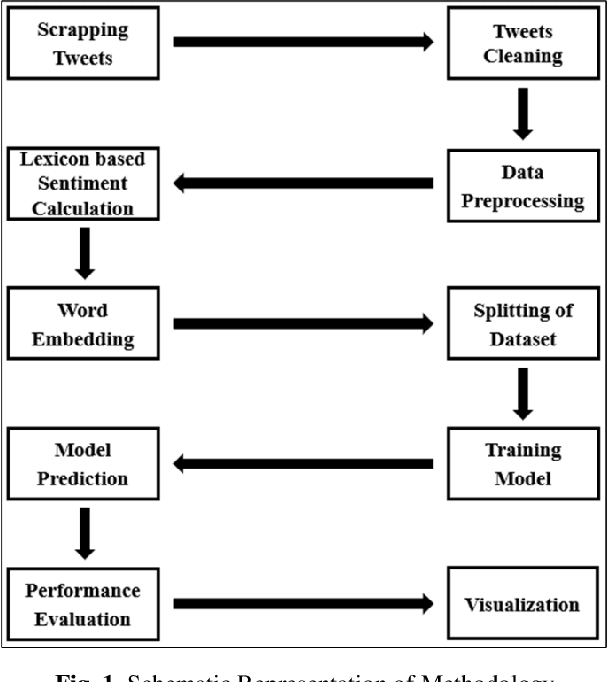

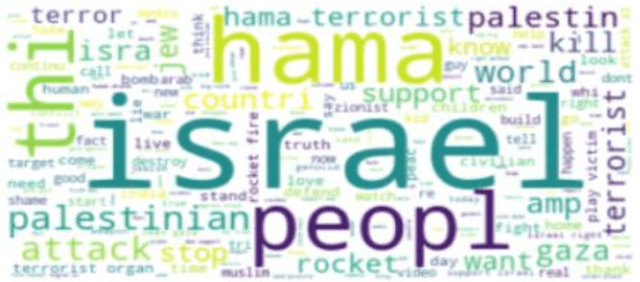
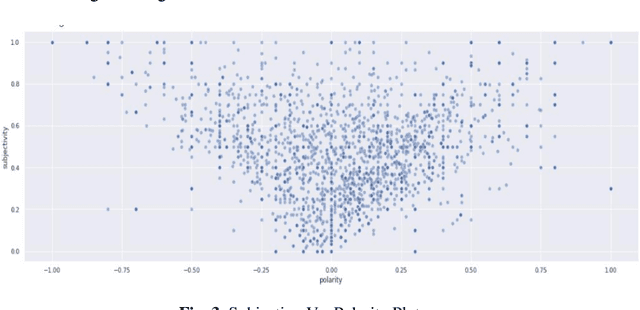
Abstract:Sentiment Analysis is a vital research topic in the field of Computer Science. With the accelerated development of Information Technology and social networks, a massive amount of data related to comment texts has been generated on web applications or social media platforms like Twitter. Due to this, people have actively started proliferating general information and the information related to political opinions, which becomes an important reason for analyzing public reactions. Most researchers have used social media specifics or contents to analyze and predict public opinion concerning political events. This research proposes an analytical study using Israeli political Twitter data to interpret public opinion towards the Palestinian-Israeli conflict. The attitudes of ethnic groups and opinion leaders in the form of tweets are analyzed using Machine Learning algorithms like Support Vector Classifier (SVC), Decision Tree (DT), and Naive Bayes (NB). Finally, a comparative analysis is done based on experimental results from different models.
Sign Language Recognition System using TensorFlow Object Detection API
Jan 05, 2022
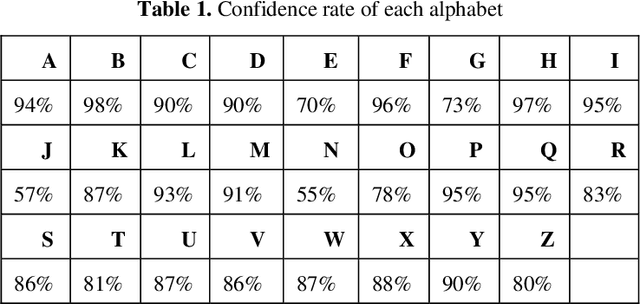
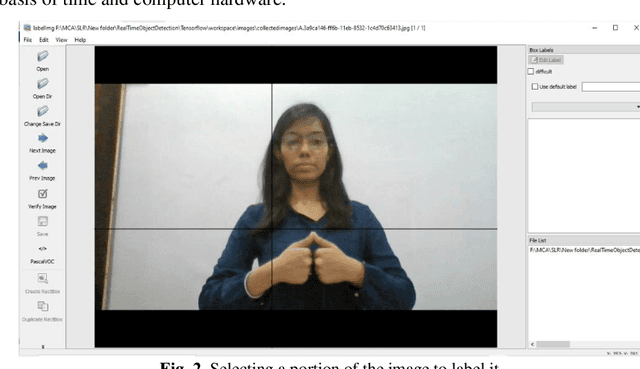
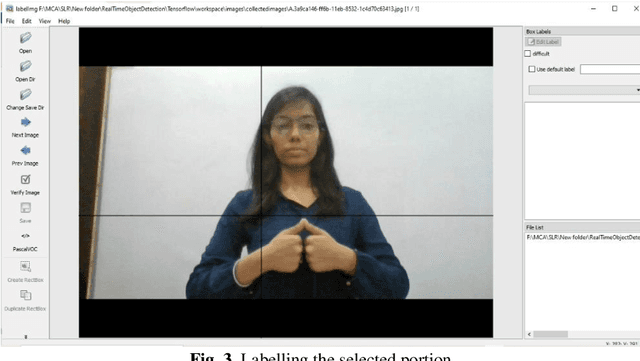
Abstract:Communication is defined as the act of sharing or exchanging information, ideas or feelings. To establish communication between two people, both of them are required to have knowledge and understanding of a common language. But in the case of deaf and dumb people, the means of communication are different. Deaf is the inability to hear and dumb is the inability to speak. They communicate using sign language among themselves and with normal people but normal people do not take seriously the importance of sign language. Not everyone possesses the knowledge and understanding of sign language which makes communication difficult between a normal person and a deaf and dumb person. To overcome this barrier, one can build a model based on machine learning. A model can be trained to recognize different gestures of sign language and translate them into English. This will help a lot of people in communicating and conversing with deaf and dumb people. The existing Indian Sing Language Recognition systems are designed using machine learning algorithms with single and double-handed gestures but they are not real-time. In this paper, we propose a method to create an Indian Sign Language dataset using a webcam and then using transfer learning, train a TensorFlow model to create a real-time Sign Language Recognition system. The system achieves a good level of accuracy even with a limited size dataset.
Sentiment Analysis and Sarcasm Detection of Indian General Election Tweets
Jan 03, 2022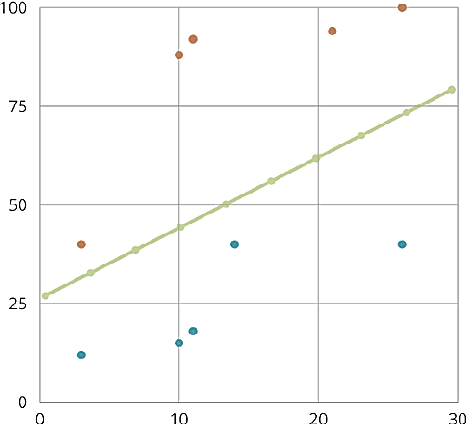
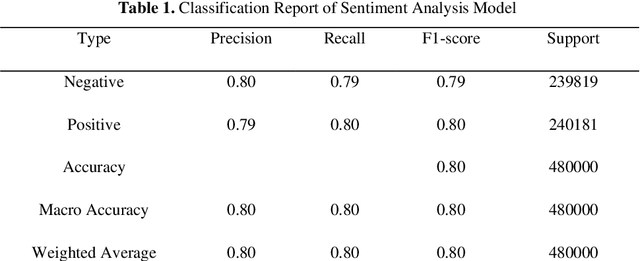
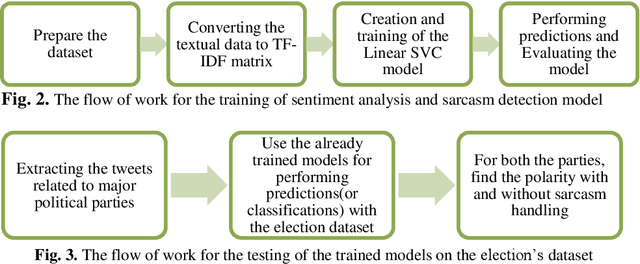
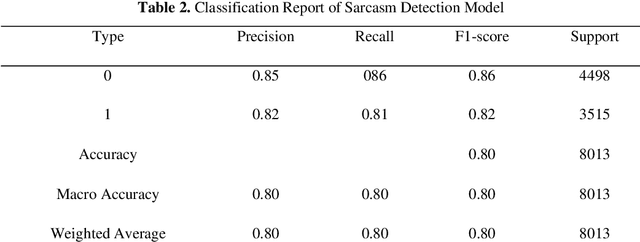
Abstract:Social Media usage has increased to an all-time high level in today's digital world. The majority of the population uses social media tools (like Twitter, Facebook, YouTube, etc.) to share their thoughts and experiences with the community. Analysing the sentiments and opinions of the common public is very important for both the government and the business people. This is the reason behind the activeness of many media agencies during the election time for performing various kinds of opinion polls. In this paper, we have worked towards analysing the sentiments of the people of India during the Lok Sabha election of 2019 using the Twitter data of that duration. We have built an automatic tweet analyser using the Transfer Learning technique to handle the unsupervised nature of this problem. We have used the Linear Support Vector Classifiers method in our Machine Learning model, also, the Term Frequency Inverse Document Frequency (TF-IDF) methodology for handling the textual data of tweets. Further, we have increased the capability of the model to address the sarcastic tweets posted by some of the users, which has not been yet considered by the researchers in this domain.
 Add to Chrome
Add to Chrome Add to Firefox
Add to Firefox Add to Edge
Add to Edge